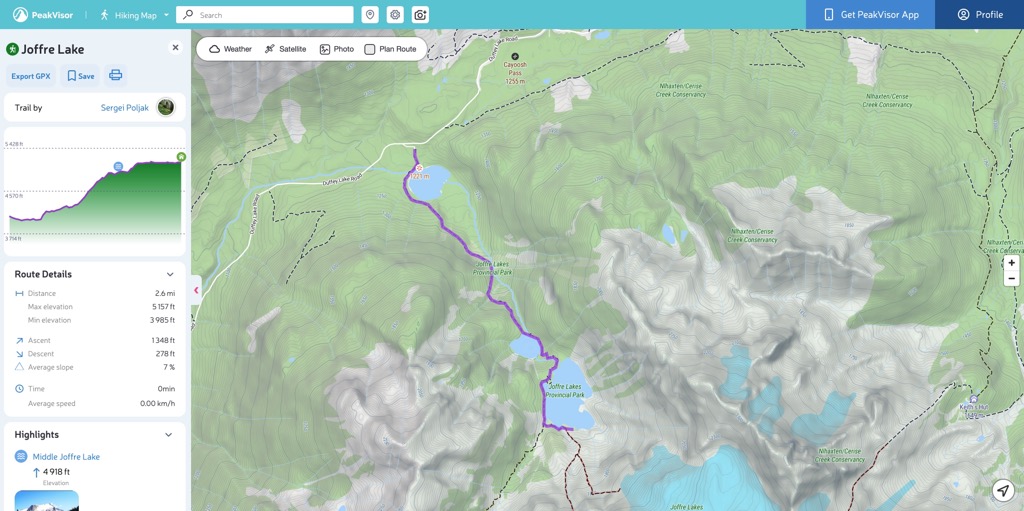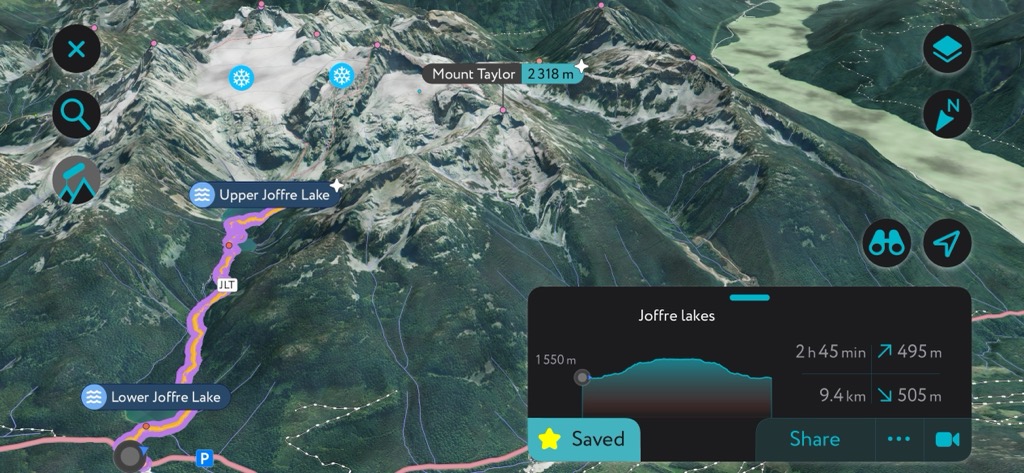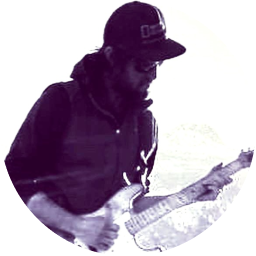Nestled in the heart of British Columbia’s Coast Mountains, Joffre Lakes Provincial Park is fast becoming one of Canada’s most popular recreation areas. From hiking and camping in the summer to world-class ski touring in winter, it’s a destination that’s attracted a million outdoor enthusiasts, nature photographers, and curious adventurers.
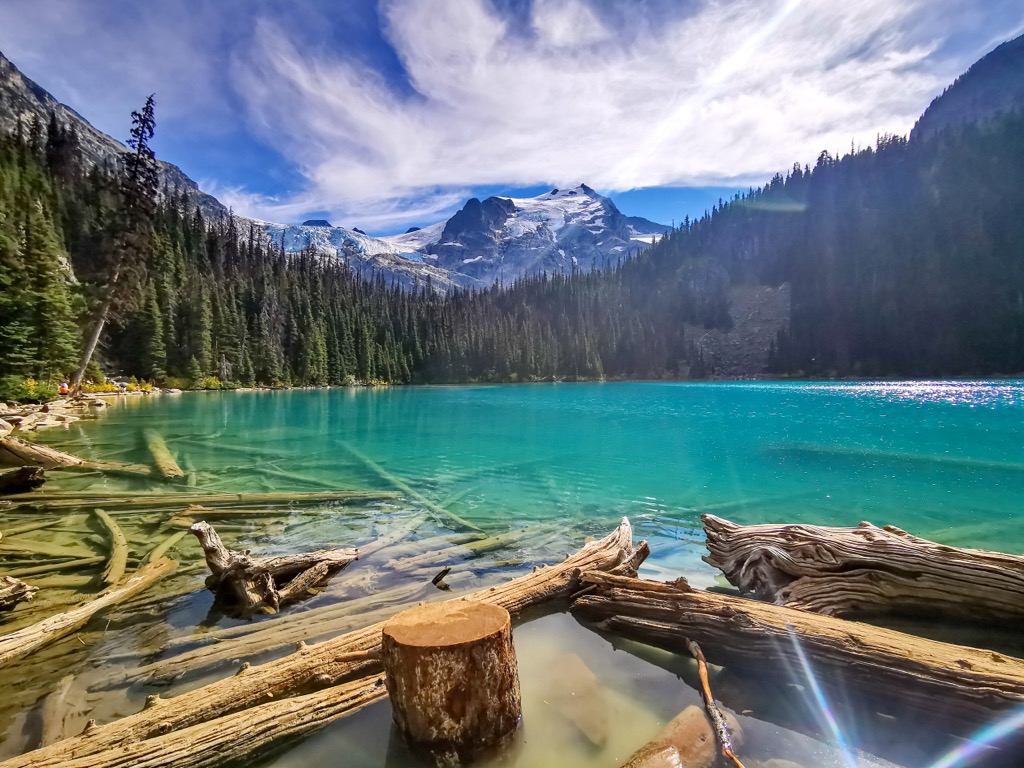
Joffre Lakes boasts three vibrant turquoise lakes and stunning glacier views. It’s surrounded by thick coastal temperate rainforest. Additionally, access to alpine terrain is simple due to the access road. The area is also deeply steeped in centuries of traditional use by the Líl̓wat Nation and N\'Quatqua First Nation, who have relied on the area for harvesting minerals, plants, berries, hunting, and fishing.
With the rise of social media, the popularity of Joffre Lakes has surged as people around the world attempt to pose on the second lake’s famous floating log. Meanwhile, in the ski world, Joffre Peak is famous for its Central Couloir, which is included in the book “The Fifty Classic Ski Descents of North America.” During Cody Townsend’s Fifty Project, where he attempts to ski all fifty lines, they actually witness somebody fall down the couloir and sustain a near-fatal injury. Notably, Cody also discusses “last descents” in this episode because, as glacier ice disappears from the Coast Range, classic ski lines are becoming inaccessible.
Day hiking presents some of the most stunning views you can imagine, but the true reward comes if you stay overnight. As the tourist masses funnel out, you’re left with the serenity of nature and the peaceful sounds of the rainforest.
Whether you choose this as a day trip or stay overnight at this Canadian gem, let this locally inspired guide uncover everything you need to know to plan a memorable visit to Joffre Lakes Provincial Park.
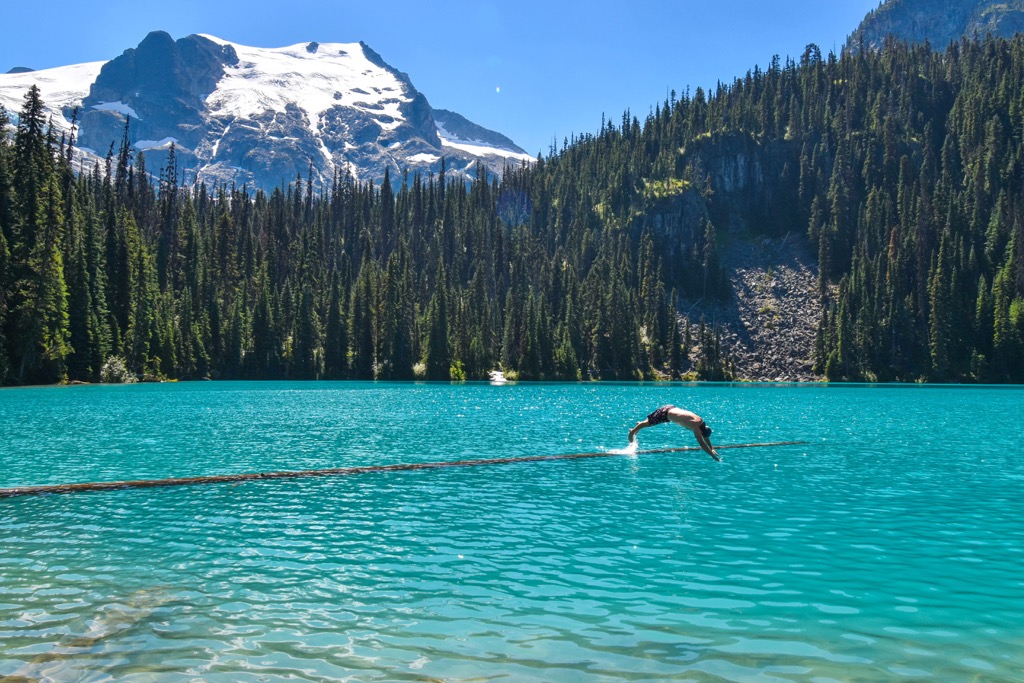
Trip Planning
The most important thing is ensuring you can get reservations for a free day pass or a backcountry camping permit in Joffre Lakes Provincial Park. Passes become available at 7:00 am, two days before your visit. Throughout the summer, multiple closures allow the Líl̓wat Nation and N\'Quatqua First Nation to have undisturbed access to their land for traditional practices.
When we visited, we decided on one night, but it’s not rare to see people stay for a couple of nights to explore the alpine glaciers and summit the several peaks surrounding Upper Lake.
Packing for an overnight here means you have to consider colder nightly temperatures, rain, and possible snow. Even in the heat of summer, nighttime temperatures can drop to 0°C. It was about 5°C at night, yet 25°C during the day when we camped in late July. A warmly rated sleeping bag and a proper R-value sleeping pad are essential, along with thermals and a puffy or light jacket for evenings.
Using the PeakVisor App
You can plan your trip in advance using the desktop route planner and then upload it to the mobile app. Conversely, Joffre Lakes is already on the map; you can just follow it and track your adventure. You can see all the stats for each hike, including vertical, length, and estimated time.
In addition to Joffre Lakes, the app is a trove of information on thousands of routes, trails, peaks, cabins, and parking areas worldwide. It’s all on here. In addition to planning your own route, as I mentioned above, you can also upload .gpx files if we don't have a trail on our servers. The PeakVisor app is available for iOS and Android; give it a shot and discover our visually stunning 3D Maps, adding a new dimension to your alpine adventures.
Other Items to Bring:
- Lightweight tent
- Camping stove and fuel
- Cookware and utensils
- Bear-proof food storage
- Garbage bags
- Headlamp
- Water filter
- Bear spray
- Sunscreen and bug spray
- Hiking poles (optional)
- Ultralight camping chair (optional)
Getting There
Joffre Lakes Provincial Park sits about 2.5 hours away from the city of Vancouver and is easily accessible if you have a vehicle. From Vancouver, hop on the Sea-to-Sky Highway (Hwy 99 North) and pass through Squamish, Whistler, and Pemberton, three stunning towns worth checking out.
The Joffre Lakes Trailhead parking is located right on Hwy 99; you don’t need to make any additional turns.
Although the drive along the scenic Sea-to-Sky highway is an experience all on its own, it can be dangerous for those preoccupied with its beauty. Tight turns and variable speed corridors stretch the length of this highway, making this a very demanding drive. Delays and closures can occur regularly, so check up on conditions before you leave.
Trail Overview
The Joffre Lakes hike consists of a well-maintained hiking trail that winds through the forest connecting three glacier-fed lakes, Lower, Middle, and Upper Joffre Lake. The round trip distance is about 11 km (6.8 mi) with roughly 370 m (1,213 ft) of elevation gain and is considered intermediate in difficulty. The average time for completion is 4 to 5 hours; however, given all the photo opportunities, it’s best if you don’t have a plane to catch.
The hike can easily be done in almost any type of outdoor footwear. It’s not rare to see people doing this in flip flops or, on one occasion, heels (however, I’m unsure if she actually made it). You won’t need hiking pants or shorts. Basic athletic gear will do, but again, the trail is so well maintained, you could knock this off in jeans.
Whether you day-trip or camp in Joffre Lakes Provincial Park, there are no garbage cans on the trail or at camp. This is a strict pack-in-pack-out destination and is, in my opinion, the most important rule to follow in the park.
Lower Joffre Lake: Just a short 500 m (0.3 mi) walk from the parking lot, Lower Joffre offers a tranquil introduction to what's in store. The striking glacial colours against the backdrop of evergreen forests with Joffre Peak in the distance remind you to pause and take a breath before the real work starts.
Middle Joffre Lake: The trek to reach the middle lake ascends through forested switchbacks and presents a steady climb. You’ll encounter steep sections with some makeshift wooden steps, bridges over streams, and some muddy stretches in times of rain. Hikers tackle the majority of the hike’s elevation here. This section of the trail is just over 3 km (1.7 mi) and will take around an hour to reach from the first lake. About halfway up, you pass through a wide open valley with fields of greenery and, if you hike in August, colourful wildflowers.
Under a canopy of vegetation, the trail straightens out, and you get your first glimpse of the second lake. In my opinion, Middle Joffre Lake is the most beautiful. The rich turquoise waters are electrifying to behold. With the backdrop of Joffre Peak and the Matier Glacier, your brain has a hard time comprehending that this is your current reality.
The waters get their turquoise hue from their glacial origins. As glaciers slide down the mountain, they scrape off small bits of dust called rock flour. This flour gets dissolved into the meltwater, giving these lakes their unreal appearance.
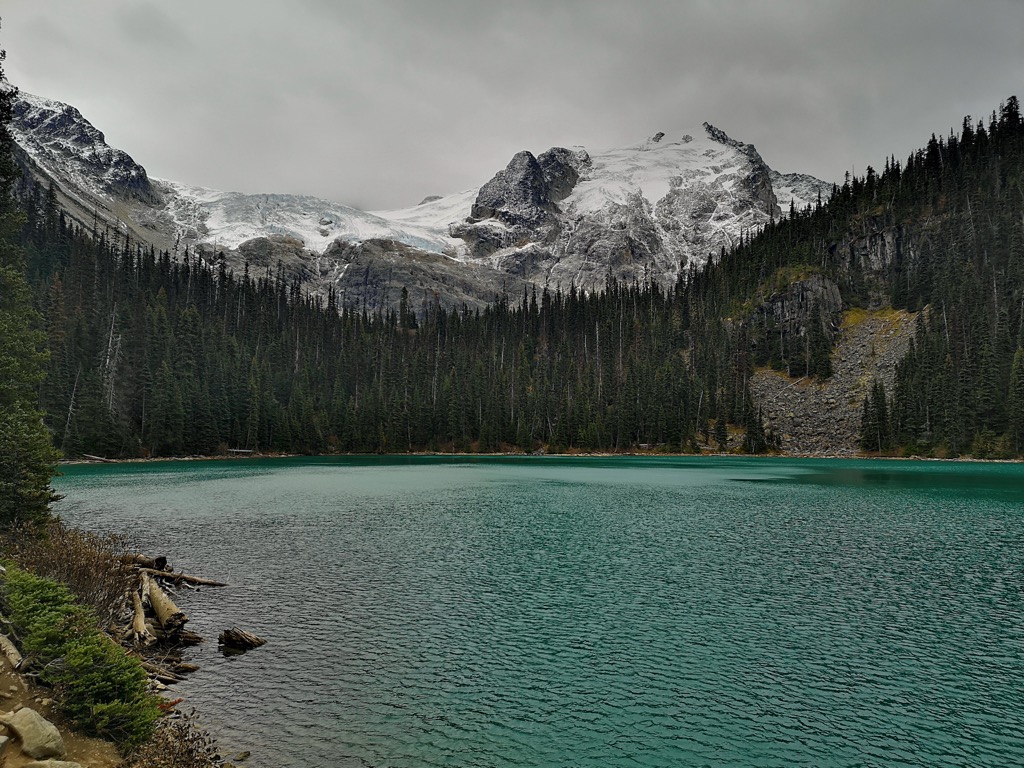
It’s a vibrant place to stop for a snack or lunch and watch tourists trying to snap the perfect shot standing on Joffre’s iconic floating log. People always fall in; it’s prime entertainment and worth stopping for a show. As we rested, the local Whiskey Jacks eagerly approached, on the lookout for snacks from unsuspecting visitors. Be warned, these cute little tricksters have stolen food right from my plate.
Middle Lake is also the easiest to enter for a swim, a rite of passage for anyone trekking to the top. Swimming in a cold glacier-fed lake ignites the senses and disperses any fatigue. It’s a great mental reset as cold water always pulls me into the present.
Upper Joffre Lake: The trail's final 1.3 km (0.8 mi) stretch towards Upper Joffre is mostly flat, less busy, and takes 20-30 minutes to reach. As the shrieks and hollers die down from those swimming (or falling) in the second lake, you’re reintroduced to the quiet of the trail, and the sounds of nature return. Most tourists only trek to the second lake and turn around, meaning the last lake tends to have a more relaxed vibe.
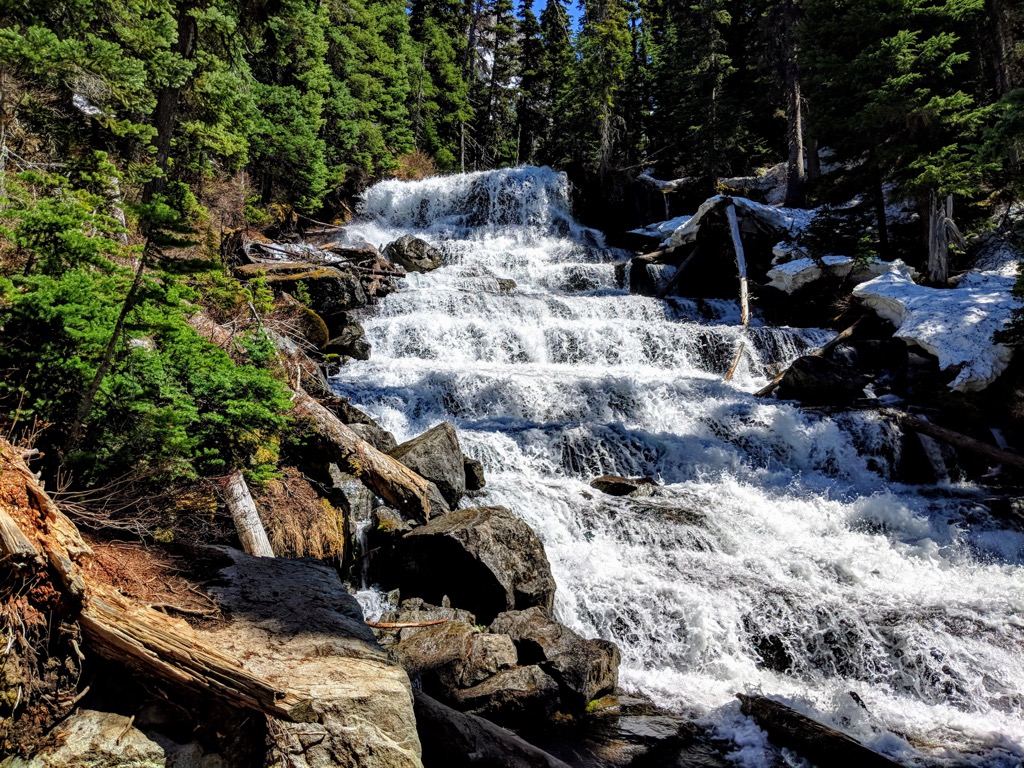
Holloway Falls eventually comes into view. Although a small waterfall, a torrent of whitewater emerges from the old growth and crashes under an old bridge—the perfect spot to fill up your water filter bottles and continue onwards. The trees begin to thin as you enter the alpine bowl where the final lake sits.
Dark teal waters reflect the rugged ridgelines of Joffre Peak and the two-million-year-old Matier Glacier in the distance. The trail disappears in spots where you’ll navigate the rocky shore in search of the 26 camping pads on the far side of the lake.
The majority of day-trippers will end here and bask in the sun (if you’re lucky) after a dip in the coldest of the three lakes. For those ready to spend the night in the mountains, another 1 km (0.6 mi) walk awaits.
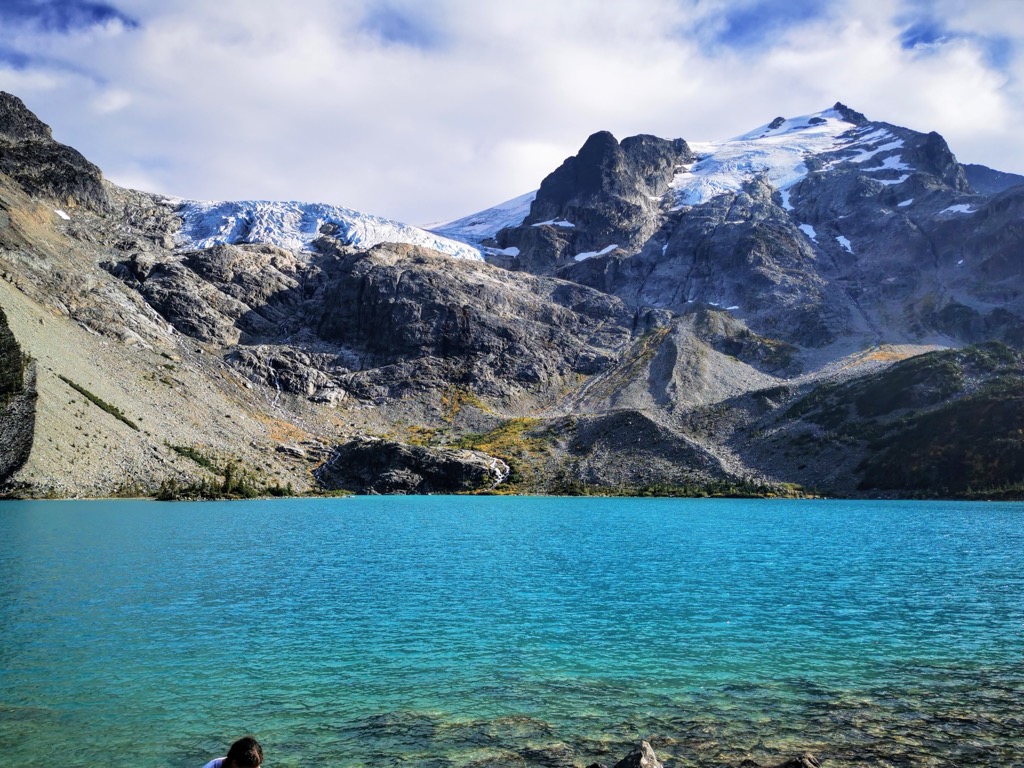
Arriving at Camp
On the far end of the lake, you’ll reach your home for the night. With a breathtaking view of the glacier's edge and the steep walls of Joffre Peak towering above you, it’s a nurturing spot to settle in for the evening. Ice-cold water trickles down the mountain in streams with which you can fill your water filter. As the final crowds retreat, you are finally left with peace and stillness. Backpackers dot the sleeping pads on the backside. Strolling around camp, you can chat with locals and regional visitors getting set up for a night in the mountains.
This is where the real fun of backpacking happens. No phone service and nothing but time create the perfect scenario of remembering what it means to be human. You meet people, cook dinner together, watch the sun go down, play cards, and swap stories over the light of a lantern. The evening ends with a midnight venture away from camp to gaze at the stars while coming to grips with the sheer vastness of the universe and your tiny place in it.
After a day on the move and an evening in the crisp mountain air, lying on your simple sleeping pad deep in your sleeping bag is better than a five-star hotel bed.
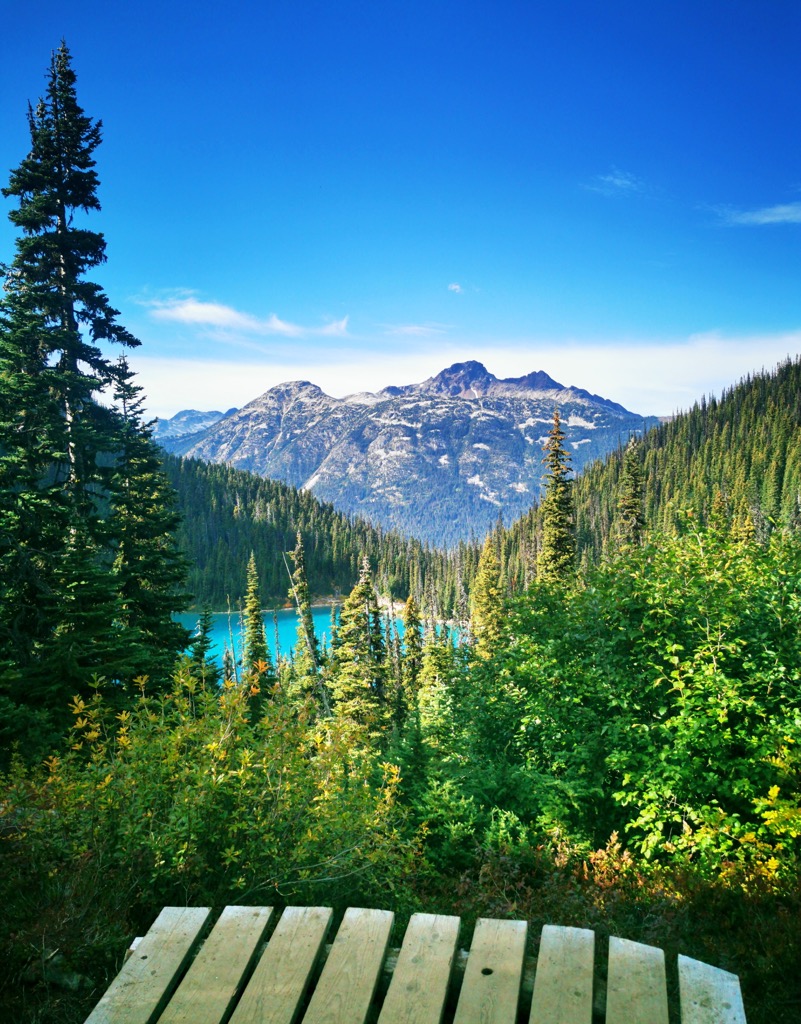
The Return Trip
As early morning light illuminated the outlines of Joffre Peak, campers began to stir and tentatively venture out of their tents like groundhogs searching for the first signs of spring.
The coolness of the alpine does more for the senses than the coffee you’re brewing. We filled our mugs and found a quiet little spot to experience dawn in the mountains. To see the morning sun dance across the jagged peaks and glaciers, and hear the sounds of nature waking up is calming yet energizing.
I really enjoy my mornings in nature, so there’s never a rush to depart, and this experience is no different. A hearty breakfast of oatmeal, fruit, and croissants fuels our bodies for the straightforward return trip. On the way down, we passed the same three iconic lakes with views of Cayoosh and Oleg Mountain in the background. With lighter backpacks and a well-groomed trail, the descent can be as fast or as relaxing as you see fit.
As I like to motor once my feet hit the trail, we made it back to the parking lot in about 1.5 hours. A more realistic goal for those who enjoy the journey would be 2 to 3 hours.
Conclusion
Joffre Lakes Provincial Park is a quintessential British Columbia destination that combines rugged wilderness, natural beauty, and rich colours in an easily accessible location. To come here is a gift. Prepare thoroughly, and respect the delicate ecosystem as the Indigenous have done for centuries. The land here is sacred and embedded with spirit.
Through 11 km (6.8 mi) of lakes, mountains, and glaciers, this experience provides more than just photo-ops. May you be inspired by the beauty, find solace in quiet stillness, and be reminded of the spiritual relationship between humans and nature.

